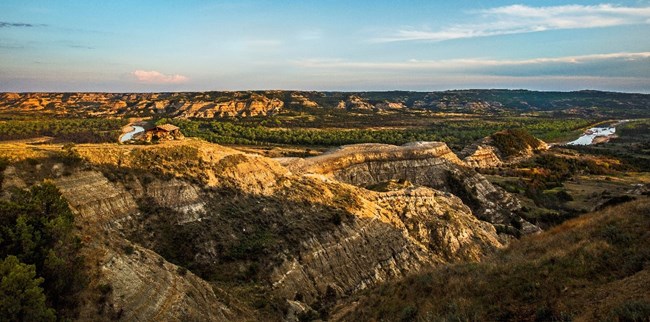Learn about NRCAs
The Natural Resource Condition Assessment (NRCA) Program provides framework, funding, and publishing support to parks to aid in the synthesis and documentation of natural resource conditions. Condition assessment reports are a tool to describe selected park resources, and record a snapshot of their current condition, identify trends, and identify potential or current threats and stressors. Understanding the condition and trend of natural resources is key for parks and NPS planners to appropriately prioritize and allocate stewardship resources.

NPS/Dave Bruner.
Traditional NRCA Report: 2014
In an effort to better understand the natural resources and processes present in this park, a Natural Resource Condition Assessment was conducted and published in 2014. Representatives from the National Park Service and St. Mary’s University of Minnesota collaborated to determine park needs and available data. This team chose 17 resource topics to evaluate:
- Fire |
- Prairie dogs |
|||||
- Wind and water erosion |
- Breeding birds |
|||||
- Flooding (Little Missouri River) |
- Air quality |
|||||
- Native grasslands |
- Water quality |
|||||
- Juniper forests |
- Soundscape |
|||||
- Floodplain woodlands |
- Dark night skies |
|||||
- Woody draws |
- Surface water availability |
|||||
- Upland shrubland communities |
-Paleontological features |
|||||
- Aquatic communities |
|
The conditions of some resource topics varied, however many of them were unable to be assigned a condition rating. Four resource topics were in good condition (fire, prairie dogs, air quality, water quality), and three were given a condition of moderate concern (flooding, native grasslands, woody draws). The remaining resource topics were missing data, or had insufficient data that made making comparisons invalid or inappropriate. Ongoing data monitoring will play a large part in continuing to adaptively manage the valuable natural resources within this park.
For other reports and natural resource datasets visit the NPS Data Store.
Source: NPS DataStore Collection 7765 (results presented are a subset). To search for additional information, visit the NPS DataStore.
Last updated: February 25, 2022
